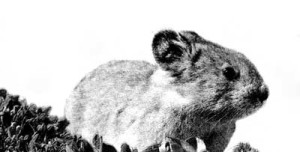A Conversation with the Park’s Chief of Terrestrial Ecology
Reflections Visitor Guide
Crater Lake National Park
Summer/Fall 2009
National Park Service
Laura Hudson is the park’s new Chief of Terrestrial Ecology. Before coming to Crater Lake, she worked at many other national parks including Big Bend, Carlsbad Caverns, Mt. Rainier, Sequoia & Kings Canyon, Black Canyon of the Gunnison, Rocky Mountain, Bighorn Canyon, Denali, and Mesa Verde. Laura holds a masters degree in Forestry from the University of Montana and a Ph.D. in Botany/Ecology from the University of Wyoming.
Q: What exactly is a Terrestrial Ecologist?
|
|
Laura: The Latin translation of “terra” is “of the earth.” As the park’s Terrestrial Ecologist, I manage the plants and animals living on land, while the park’s Aquatic Ecology program manages the lake and other water bodies in the park. Despite this distinction, all natural resources are interrelated in process and function, so most projects are done on a collaborative basis.
Q: What are some of the challenges you face in managing the park’s plants and animals?
Laura: A big challenge is the uncertainty surrounding climate change. Climate is a major driver in all ecosystem processes, but when it changes rapidly, the effects can be unpredictable Like most of the West, this park is being affected by accelerated climate change, although the changes here may be more subtle compared to the long-term drought In California and the Rocky Mountains. However, I believe this park is straddling a biological threshold where one or more triggers (i.e longer and warmer summer seasons) could push many of our natural resources into a less resilient state, thus promoting the invasion of non-native plants and animals.
Q: Can you give an example of a species presently being affected by climate change?
Laura: I’ll give you two-the American pika and whitebark pine. Both species have experienced increased mortality due, in part, to climate change. The pika, a small, alpine-dwelling relative of the rabbit, is intolerant of high temperatures and can die from overheating when exposed to temperatures as low as 78°F (26°C). The whitebark pine, a slow-growing keystone species in alpine communities of the West, is under increasing attack by insects that are surviving longer due to increased temperatures at higher elevations. Recently, both species have been petitioned for listing as Federally Endangered. The whitebark pine is the first tree ever considered for listing.
Q: What projects are taking place at Crater Lake this summer that specifically address climate change?
Laura: Most of our projects incorporate a long-term monitoring component that will help quantify the effects of climate change through trend analysis. Our projects include monitoring (and controlling) weed invasions throughout the park, including the lake shoreline and Wizard Island; monitoring of blister rust (a non-native fungus) and mountain pine beetle infestations of whitebark pine communities; inventory and monitoring of high-elevation American pika populations; surveys for eastern barred owls moving into northern spotted owl territory; monitoring recently burned areas to check for increased tree mortality, weed invasions, and insect infestations; and monitoring of two rare plants Crater Lake rockcress and pumice moonwort).
Q: Sounds like a lot of work. Despite the challenges you face, what do you like most about your job?
Laura: Location, location, location! Crater Lake is a beautiful office.



